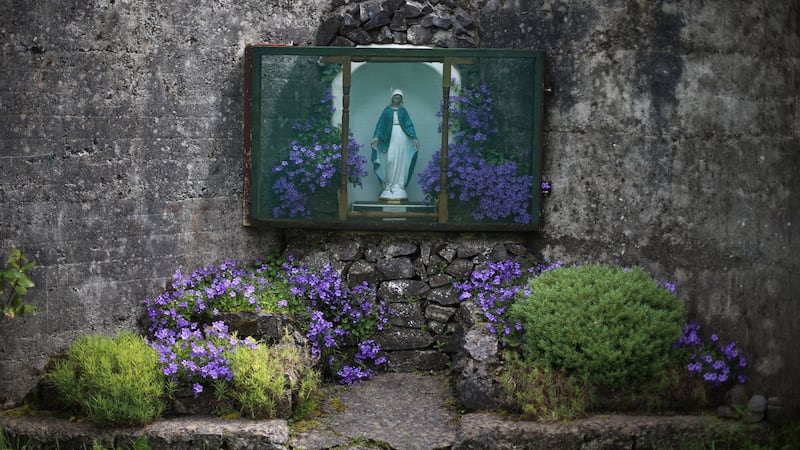Carmel Larkin says she couldn't sleep a wink on Monday night, anticipating a Government decision on a site that she once called home.
Larkin, a widowed mother of three, was one of the many "home babies" who spent her early years with the Bon Secours sisters in Tuam, Co Galway. She left when she was fostered out at the age of five in 1954, moving to Mayo.
“I am delighted... I didn’t think the Government’s decision would be this one,” Larkin said, reacting to Minister for Children Katherine Zappone’s confirmation of phased excavation and exhumation of the site of the former Tuam mother and baby home.

"I moved back to Tuam over eight years ago, and have never been able to trace my birth mother. Catherine Corless is helping me with that, and a group of survivors meet once a month," she said.
“We found out from talking to each other that we were afraid of everything, we had never seen animals, and we all wet the bed for years after. It wouldn’t suggest care or comfort – and we were the ones that survived.”
Media attention
Since historian Catherine Corless’s research into 796 death certificates for infants in the home was publicised, the town of Tuam has lived with national and international media attention.
“We have all grown up in its shadow, and for years local people tended a grotto to those who died – yet their work is now being forgotten in all this,” one resident, who preferred not to be named, said.
However, Tuam resident and retired school principal Kevin O’Dwyer said he was delighted with the Government’s decision. O’Dwyer has clear memories of the fellow pupils who were obliged to wear a uniform when others weren’t, and assigned a separate play area. He still remembers the clatter of the boots on the road in the morning, and how they would receive daily slaps for arriving late.
One of the home children came to his rescue when he was being bullied in the yard, and he has never forgotten her name – Mary Curran.
“I think that just to erect a memorial at the site would have been totally wrong, because it is very important to establish the exact facts,” O’Dwyer said. “Catherine Corless herself says that there is no evidence that all 796 children who she had death certificates for were buried, and there may have been illegal adoptions to the US. If there is another story to be told, it has to be.”
Documentary
In O'Dwyer's view, the turnout of more than 1,000 people at a vigil in Tuam during the pope's visit reflected a consensus in the town that a full excavation was required. He said people were also very moved by the testimony that home survivor Peter Mulryan, a founder of the Tuam Home Survivors' Network, gave in the recent TG4 documentary, Finné.
Mulryan, who is currently in the US, said he believed there were words missing from Ms Zappone’s announcement – “crime investigation” and “inquest”. “This has to be treated as a full crime scene,” he said, and he also felt the sum of €2.5 million offered by the Bon Secours order was a “pittance”.
Fellow home survivor PJ Haverty, who lives in Menlough, Ballinasloe, said it was the "right thing to do" and it was "most important that this should not be forgotten".
“My mother spent 5½ years knocking on the door trying to get me out,” he said. “For all she knew, I could have been one of those children who died, or had gone to America and been adopted.”
“This was a mother who loved her son and wanted her son, and they humiliated her. I was lucky to be able to meet her, first in the 1970s, but she had never got over the loss,” he said.









